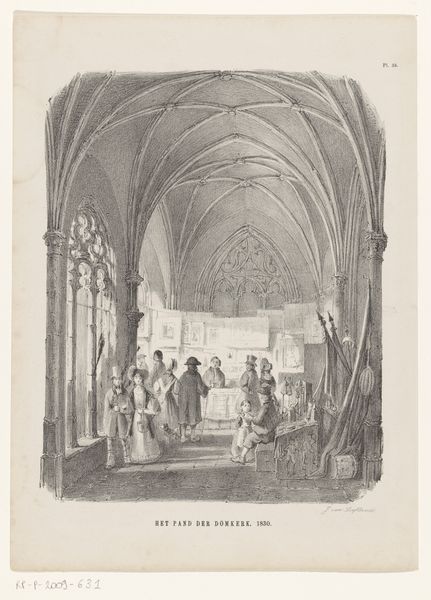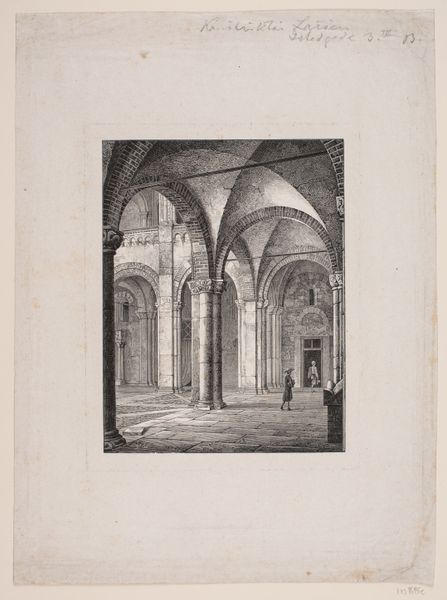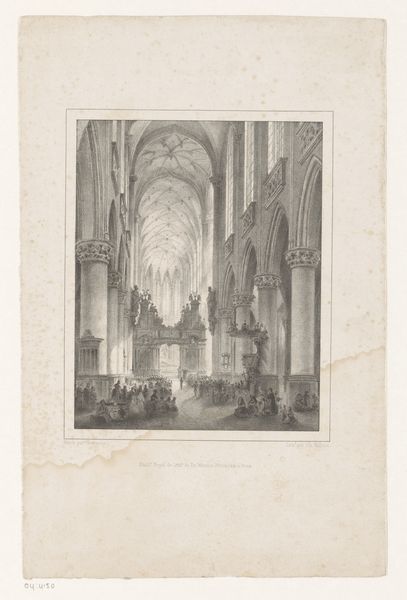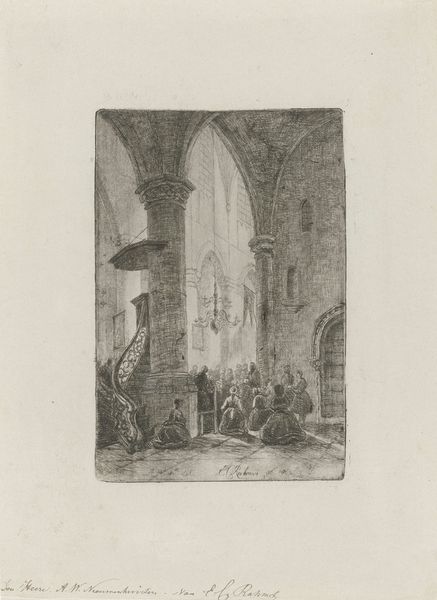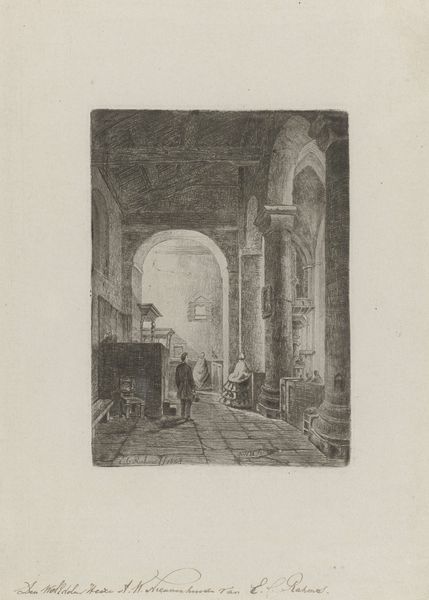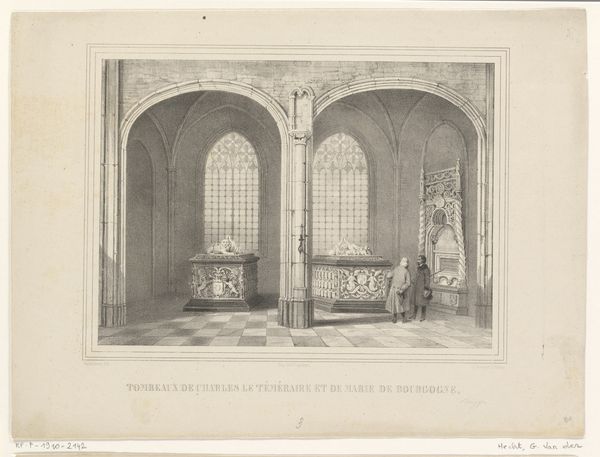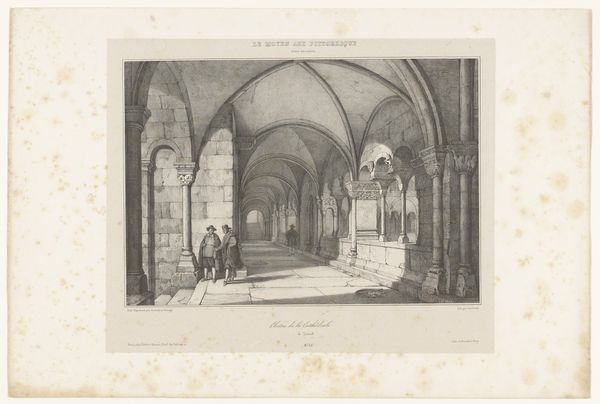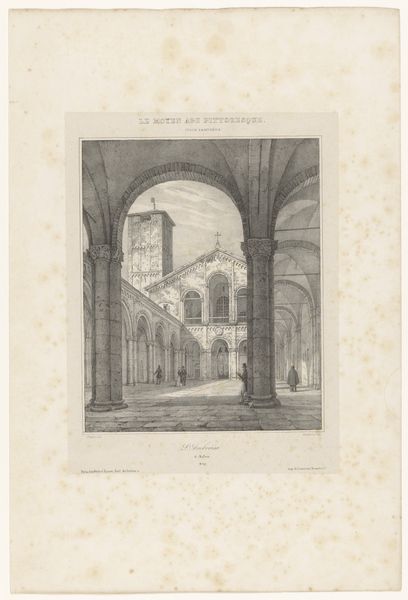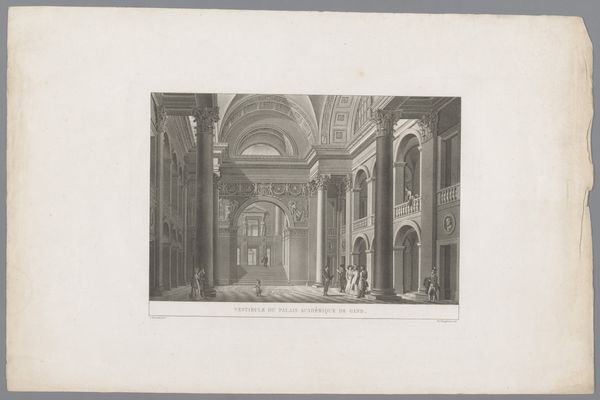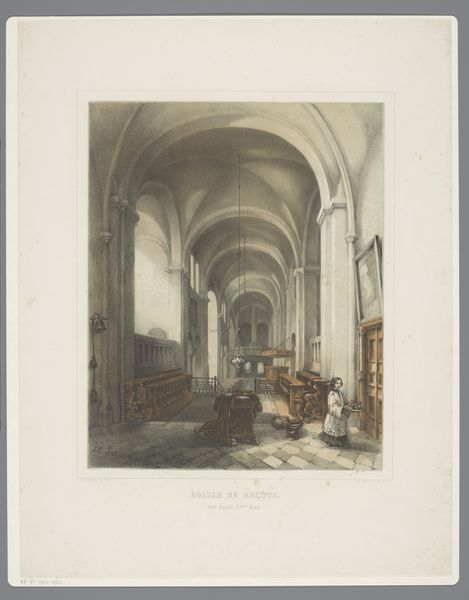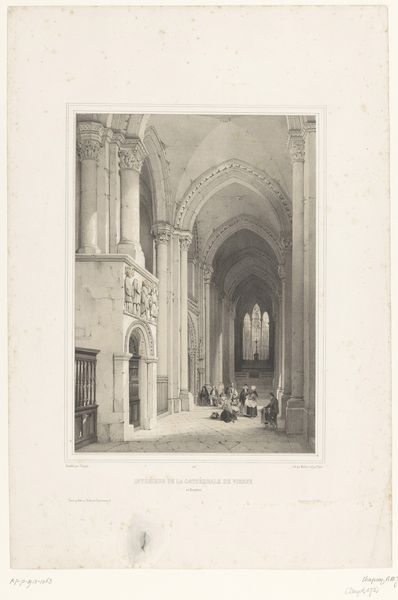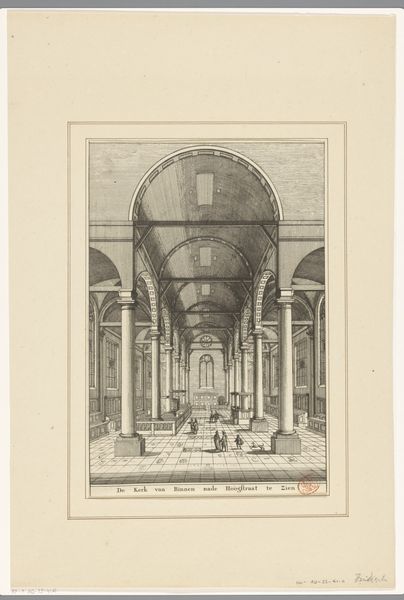
Interieur van de Dominicanerkerk Saint-Nom-de-Jésus in Lyon 1818 - 1826
0:00
0:00
jeanbaptistearnout
Rijksmuseum
#
photo of handprinted image
#
light pencil work
#
pale palette
#
muted colour palette
#
pale colours
#
photo restoration
#
ink paper printed
#
pencil sketch
#
light coloured
#
white palette
Dimensions: height 540 mm, width 360 mm
Copyright: Rijks Museum: Open Domain
Curator: Jean-Baptiste Arnout produced this print, "Interieur van de Dominicanerkerk Saint-Nom-de-Jésus in Lyon," sometime between 1818 and 1826. It's currently housed here at the Rijksmuseum. What's your first impression? Editor: A cavernous hollowness strikes me—despite the figures and horses present, there's an almost eerie emptiness to the space. The stark, pale rendering accentuates this feeling. Curator: The transformation of sacred spaces into utilitarian ones reveals interesting facets of power dynamics during that period. We see the Dominican church now repurposed, seemingly for mundane activities, suggesting a shift in societal priorities and control over resources. Editor: Absolutely. Churches, historically laden with symbolism of hope and divine authority, being used in this way invites questions. Note the presence of animals within the former sanctuary. Does this signal desecration, practicality, or a more nuanced societal transition? Curator: It speaks volumes about how even the most revered structures can be redefined through material need and societal shifts. Look at the labor involved: preparing the horses, the presence of those working in the space. Consider the economic circumstances driving the practical usage of this grandiose space. The labour, the ink, and paper used in the original creation point to the transformation in how cultural relics become incorporated into labor and daily life. Editor: I'm also drawn to the play of light and shadow within the church. While pragmatism dictates the church’s usage, some elements remain untouched: the soaring arches and faded light filtering through the windows preserve a haunting spirituality—even with horses milling about. Are they just beasts of burden, or symbols carrying meaning even here? Curator: Consider too that Arnout chose printmaking for this piece, potentially democratizing its message through wider distribution than a painting may allow. A study of print consumption during that period would be fascinating to further unpack how and to what end these sorts of images were produced and used. Editor: Indeed. And whether the artist subtly imbued this 'neutral' scene with comment about power and faith remains something to contemplate. Curator: Well, it's certainly given me a renewed interest in understanding this space through the lens of its economic repurposing and the nature of image reproduction! Editor: It's reminded me of how potent symbols can remain even amidst societal change; the bones of belief haunting the practicalities of everyday life.
Comments
No comments
Be the first to comment and join the conversation on the ultimate creative platform.
